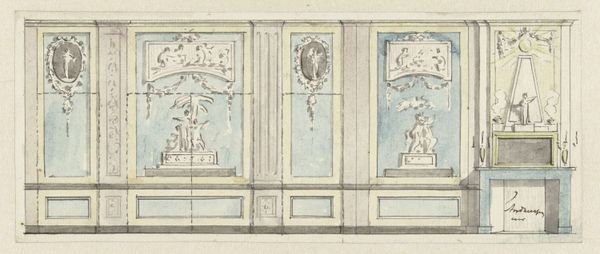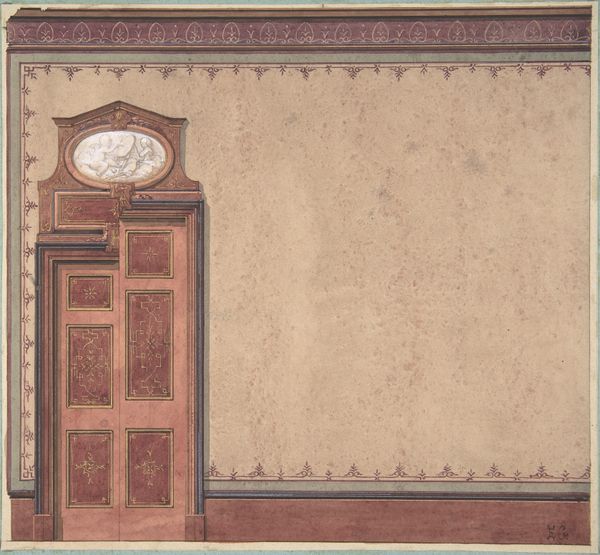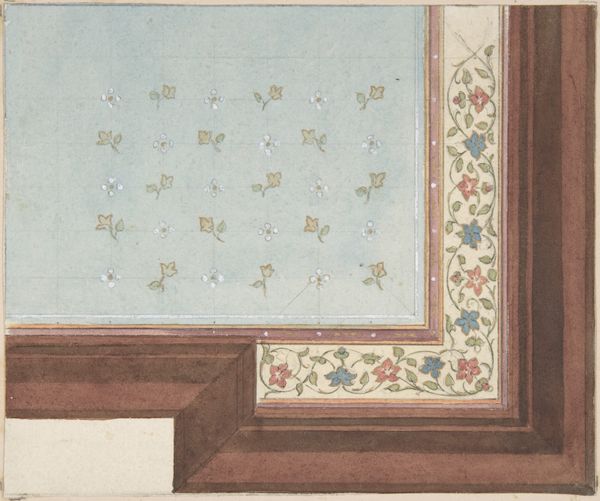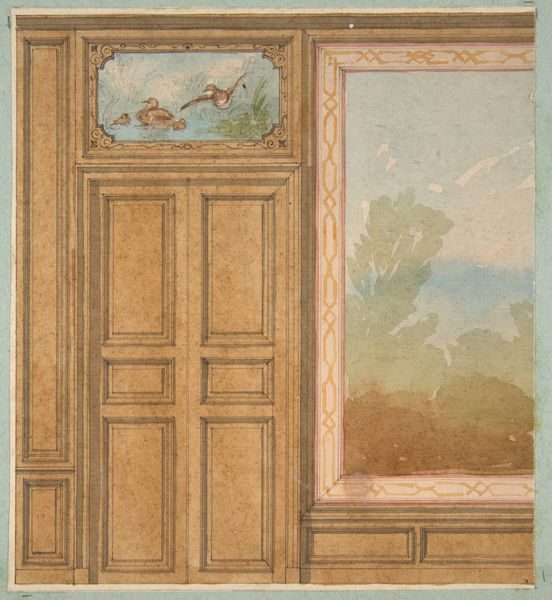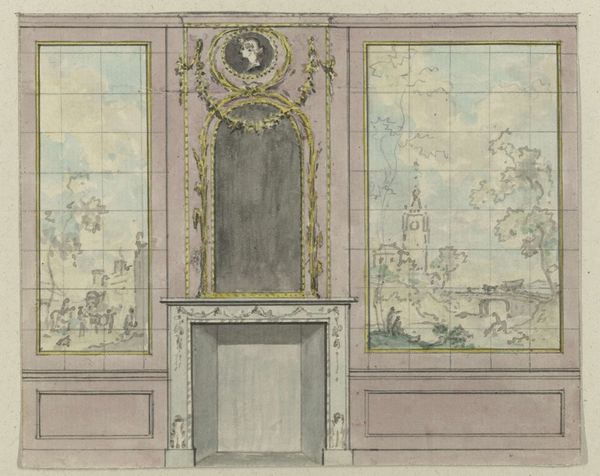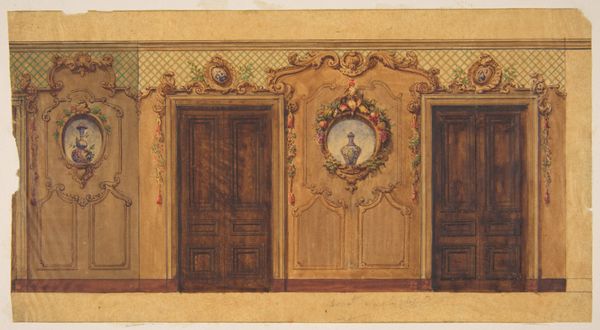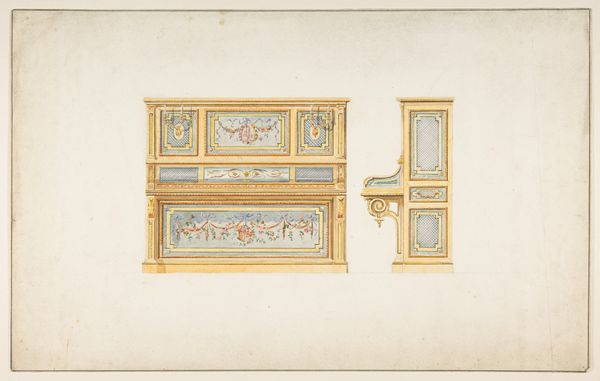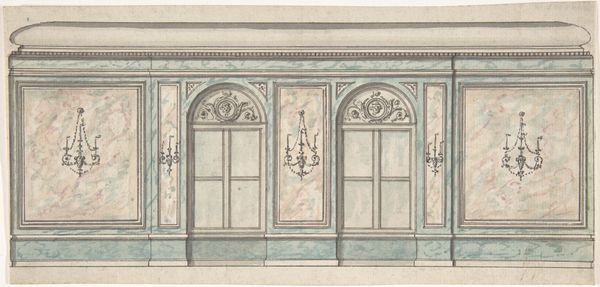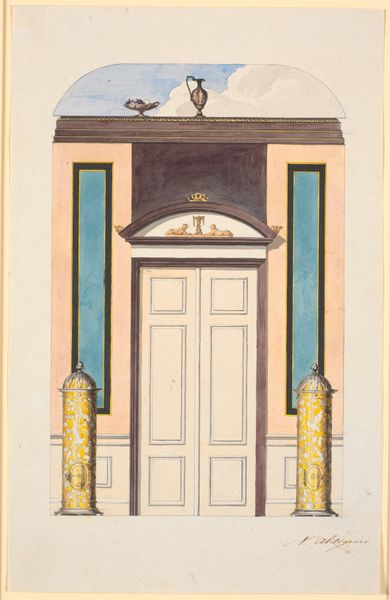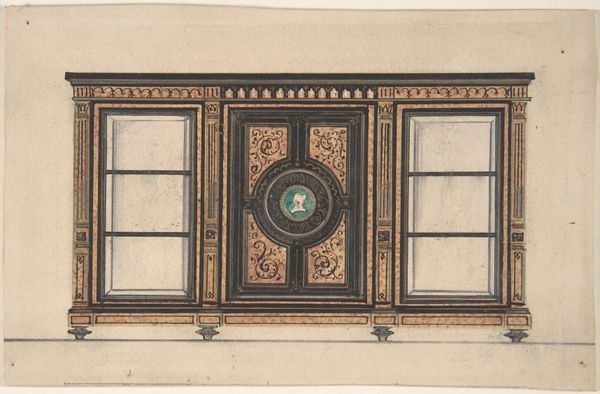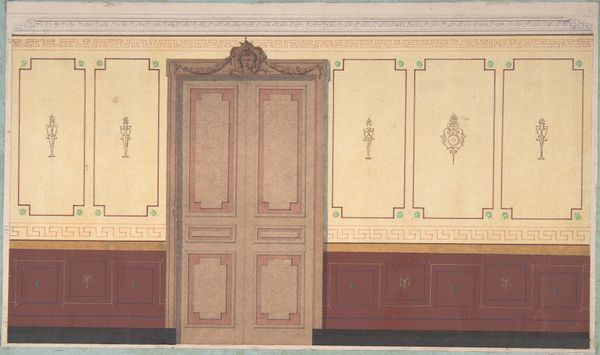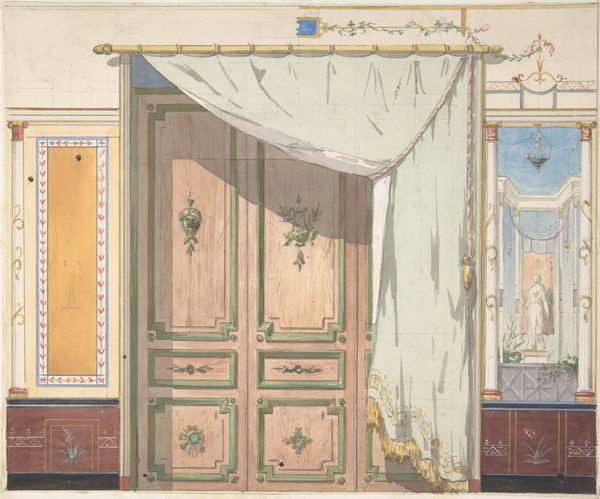
Elevation of a paneled interior with double doors and gaslight sconces 1830 - 1897
0:00
0:00
Dimensions: Overall: 10 3/4 x 8 11/16 in. (27.3 x 22.1 cm) image: 4 15/16 x 6 in. (12.5 x 15.3 cm)
Copyright: Public Domain
Curator: Let's discuss this intriguing piece titled "Elevation of a paneled interior with double doors and gaslight sconces," attributed to Jules-Edmond-Charles Lachaise, created sometime between 1830 and 1897. It's a drawing and print, primarily using pencil on paper, and is currently held at the Metropolitan Museum of Art. Editor: My first impression is one of restrained elegance. The cool blues and muted browns evoke a sense of quiet refinement, a carefully constructed stage for unseen dramas. The composition is quite formal, almost symmetrical. Curator: Precisely. The artist meticulously renders an interior elevation, providing valuable insight into the architectural and decorative tastes of the period. We see elements of both realism and romanticism, mirroring the shifts in design and aesthetics during that century. What stands out for you symbolically? Editor: Well, the gaslight sconces are quite telling. They symbolize a shift from candles to a more modern form of illumination, and therefore, speak to the cultural transformation during the period as new technologies change how society functioned. There's also something about the framed picture above the door that implies stories and lineage and ancestry. Curator: I agree, the picture acts almost as a crest. And considering that this piece likely originated as a design proposal, it underscores how spaces reflected social status and aspirations. These choices, the wall panelling style and decoration, tell stories of privilege, domesticity, and social identity within a historical milieu. Editor: Indeed. Also, observe how even the color palette of blue hues evokes feelings of nobility and grace during this time in Europe's aristocracy that were closely associated to royalty as symbol of authority or elegance Curator: That's an astute observation, emphasizing that colors have a function. It suggests a longing for, or a constructed ideal of, grandeur even in the face of societal shifts and changing industrial realities of society at this moment in time. Editor: This discussion prompts us to consider more closely these subtle signals embedded in images. The impact of even simple forms or colour on people's feelings provides fascinating clues as to human nature itself Curator: Well said. This glimpse into the late 19th century allows us a tangible connection to lives lived and values held—a potent reminder of art’s historical narrative.
Comments
No comments
Be the first to comment and join the conversation on the ultimate creative platform.
